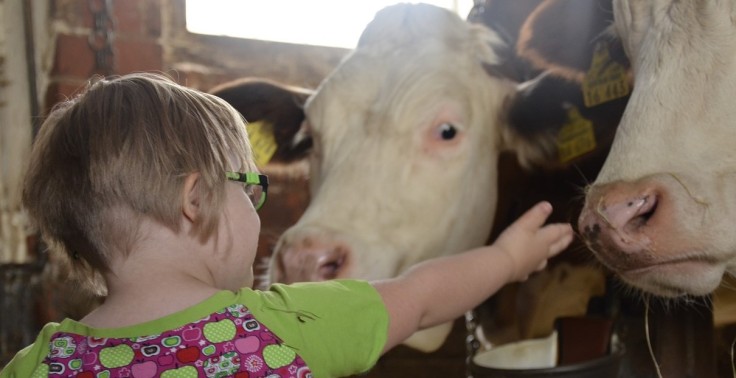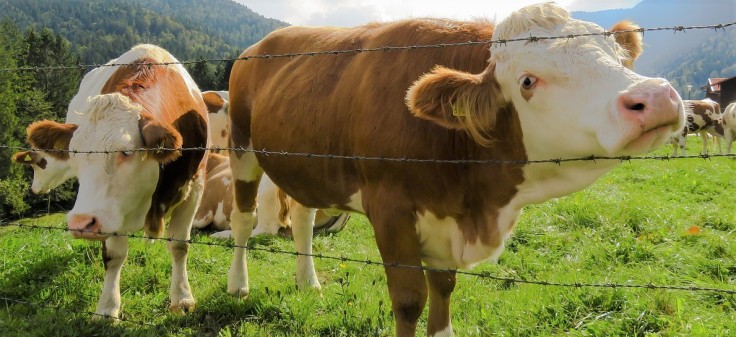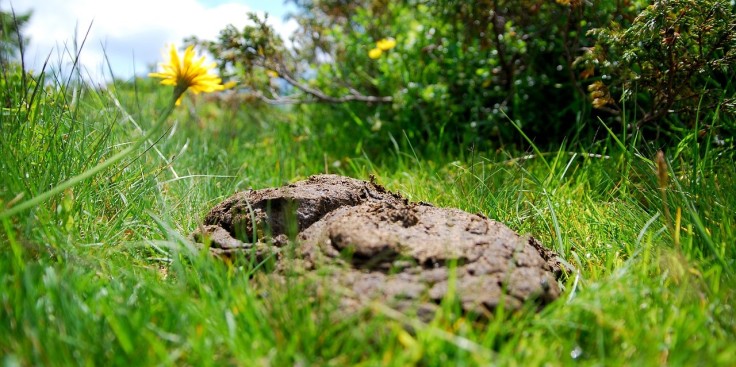We asked for useful tips to help us stay safe while out in the countryside. Here, David discusses techniques for avoiding cattle while out walking.
Oh, for the days of pre-trample innocence, when we were sure that cows were “domesticated” and so harmless! In her article, How I try to reduce my risk of being attacked by cattle, Libby makes some excellent points. Similar rules apply for me, particularly as I am very much a solo-walker.

Taking stock at the gate
In Libby’s article, she suggests waiting by the gate when you enter a field, to see how the herd reacts. That is sensible advice, but on the day I was trampled by cattle it wouldn’t have helped. When I went into my field, the herd was sitting peacefully in the sunshine.
Also, because they were are all lying down, it was difficult to check the breed and check whether calves were present. I was surprised how quickly the cows motivated and organised themselves for their attack.
Since I was attacked and trampled, I no longer go into fields with any beasts. Instead, I abandon the footpath route and divert over walls or fences, or through bogs. If the farmer is upset, I can explain later. If there is no alternative route, I turn back, as I did recently in the Dales, only to discover by chance later that someone had been killed by cows (maybe the same ones I met) on the same path a year or so back.
Discretion is the better part of valour. No route or enjoyment outweighs the possibility of another trample.
 Familiarity doesn’t necessarily mean safety
Familiarity doesn’t necessarily mean safety
The news of a second cattle attack on Devil’s Dyke proves that lightning does strike twice. And it puts paid to my theory that cattle in popular tourist areas are less of a risk compared to isolated moorland cattle.
I made assumptions that cattle in frequently walked areas are used to seeing people, and so will ignore them. But maybe, instead, they see walkers as an easy target for fun.
Avoid getting caught in the open
Getting caught in the open is a real stress point.
I have just got back from The Lakes. Earlier in the morning, I had spotted a field of cows with calves on my intended walking route, so I went the other way round, and was getting ready to divert uphill, when I suddenly found myself amongst the well-spread herd in open moors, with no chance of retreat (4 miles back along the Screes path by Wast Water if you know it).
So I went down to the water edge, because I assumed the cows would not swim out of their territory (but I’m not sure what I would do to test that theory). There I found a big stick, and just crept along incognito. The cows stared a bit, but nothing more. They were small hairy black ones, and I’m not sure of the breed.
 Walls and fences – escape routes or death traps?
Walls and fences – escape routes or death traps?
Walls and fences offer an escape, yep. But dry stone walls are not easy to climb, particularly old ones where you worry the thing will just collapse. And they may be topped with barbed wire.
Stock fencing is also not easy, particularly if you imagine being in a panic and being chased. The Health and Safety Executive recommends that farmers use cattle-proof fencing that is 1.3 metre high and with double barbed-wire. Unfortunately, that stops easy escape for people as well as cattle. Luckily most fences are lower sheep fencing, but you could still end up being hung like the washing on the Siegfried Line.
Even when walking along a track, when I come to a field boundary with cattle, I look at the strength of the defences between us.
Beware of rickety and rusty old fencing that would fall over if a rabbit leaned against it. Or fencing so low a cow could just stroll over without breaking stride. About 6 weeks after my trample, I diverted away from another quiet-looking herd, taking a route with the consolation of a very solid intervening fence. But, when I was returning the same way, the herd charged in my direction. I didn’t wait to see if the fencing held, but ran away (well, I hobbled away, as I was still in convalescence).
 Look out for dung!
Look out for dung!
Forewarned is forearmed. If you can’t see any livestock when entering a field, don’t forget to do the Sherlock Holmes bit, and look out for dung and cloven hoof prints.
I try to see if the prints look sharp and new, but I must admit not testing the temperature of the dung to judge how recently it was passed. If it is steaming – I go back!
How do YOU deal with cattle while out on a walk? Let us know your thoughts and suggestions. We’ll publish the best ones.
